Types of Fonts: The Ultimate Guide to Fonts Styles

Fonts play a powerful role in communication and branding, and they have a constant presence in our daily lives. From billboards to business cards, we see different types of fonts everywhere.
Typography is actually pretty simple to get to grips with. To help you feel less Grotesque about it (sorry, font pun), we’ve boiled down the basics for you. Pretty soon you’ll be feeling Extra Bold with your typography design skills!
To help you navigate, here’s what you’ll find in this ultimate guide to font types:
- Serif font types
- Sans serif font types
- Script font types
- Display font types
- Handwritten fonts
- Monospaced fonts
Ready to begin? Let’s get textual up in here!
Quick font terminology
When investigating different font types, you’ll likely run into some unfamiliar words. Take a look at the most common font terms you’ll hear in your search for the best font.
- Typeface: A typeface refers to the design features of a set of characters, glyphs, and symbols. Essentially, a typeface is a family or grouping of fonts with the same set of characteristics.
- Font: A font refers to a specific subset or style within a typeface. For example, Helvetica Light is distinct from its Helvetica cousins by its notably light visual ‘weight.’
- Weight: The weight of a font refers to the thickness of the letters. A bold font is thicker, meatier, and weightier. However, a light font is lighter and thinner, and a medium font is somewhere in between.
- Leading: Leading simply refers to the vertical space between lines of text. Too little, and the lines are compressed and difficult to read. Too much, and the lines are loose and disjointed.
- Tracking: Tracking refers to the process of changing the overall space between all letters in a word. Too little space results in cramped, hard-to-read text, and too much makes words look loose. Different types of fonts will have different levels of tracking.
- Kerning: Kerning refers to changing the space between individual letters. Kerning allows us to make subtle changes between specific letters. Usually between letters that take up disproportionate amounts of space, like A, W, V, and T.
The main types of fonts
While there are thousands of fonts to choose from online, there really are only six main types of fonts that act as the broader font categories.

To help you narrow down what you’re looking for, here are some examples of the most popular types of fonts, their common features, and helpful examples.
1. Serif font types

The word ‘serif’ comes from an old Dutch word for a dash or line, so serif fonts are defined by the ‘serif’ at the end of letters. Serif fonts are making a huge comeback in recent years, as we’ve already covered in our most recent font trends piece.
We’ll cover some of the most common types of serif font styles:
- Old-style/humanist serif fonts
- Modern serif fonts
- Transitional serif fonts
- Slab serif fonts
Old-style/humanist serif fonts
Old Style fonts are typically recognizable because of their low contrast between thick and thin strokes (a fancy word for the lines that make up a letter), wedge-shaped serifs, and their slightly left-leaning ‘stress’, which is another fancy word for the tilt of a letter stroke compared to its axis.
Their hand-drawn, organic feel makes them well-suited to branding that requires a more distinguished and traditional look, like restaurants or law firms.
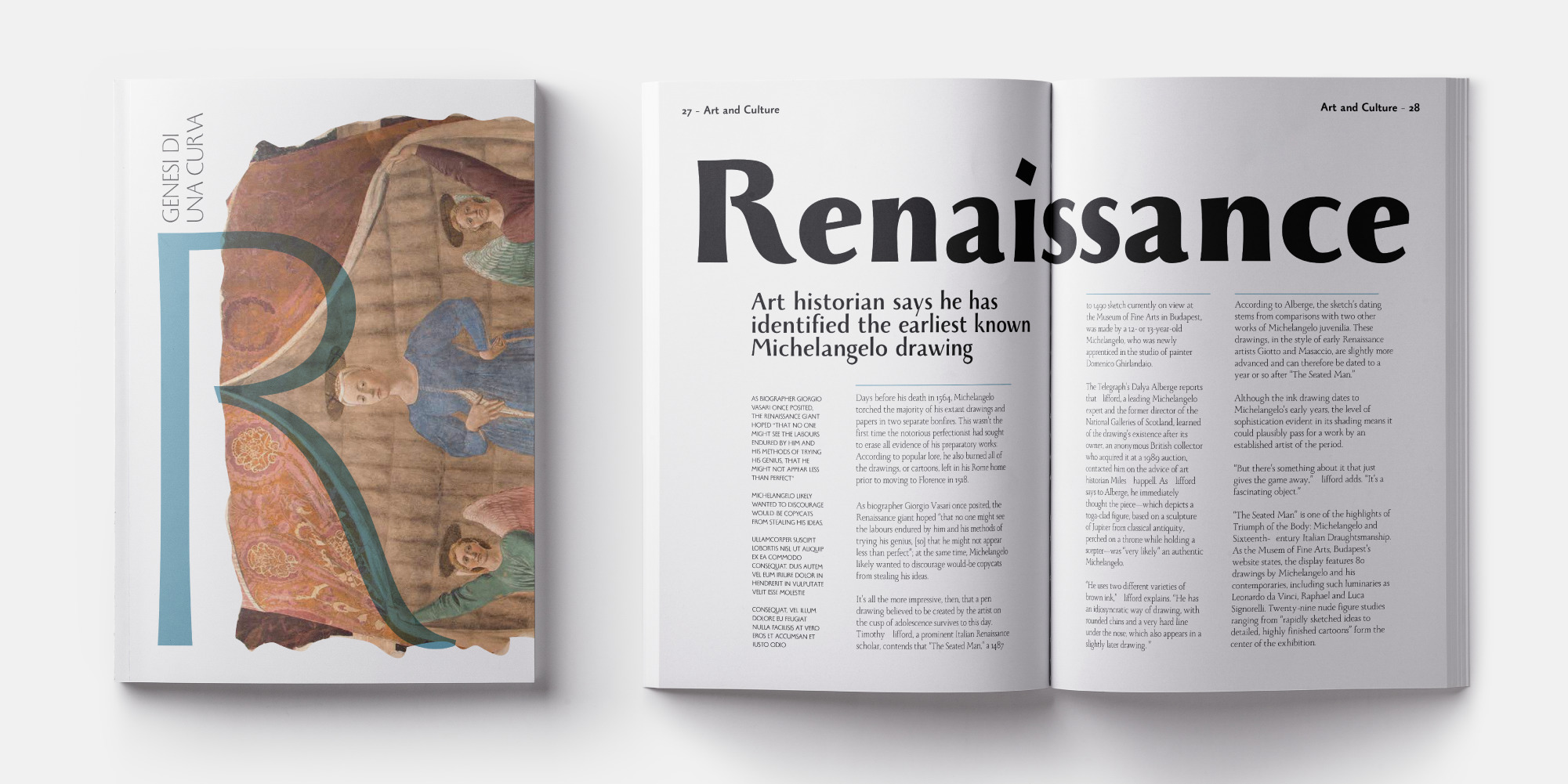
Monterchi Serif, designed by Zetafonts is a great example of an Old Style font type.
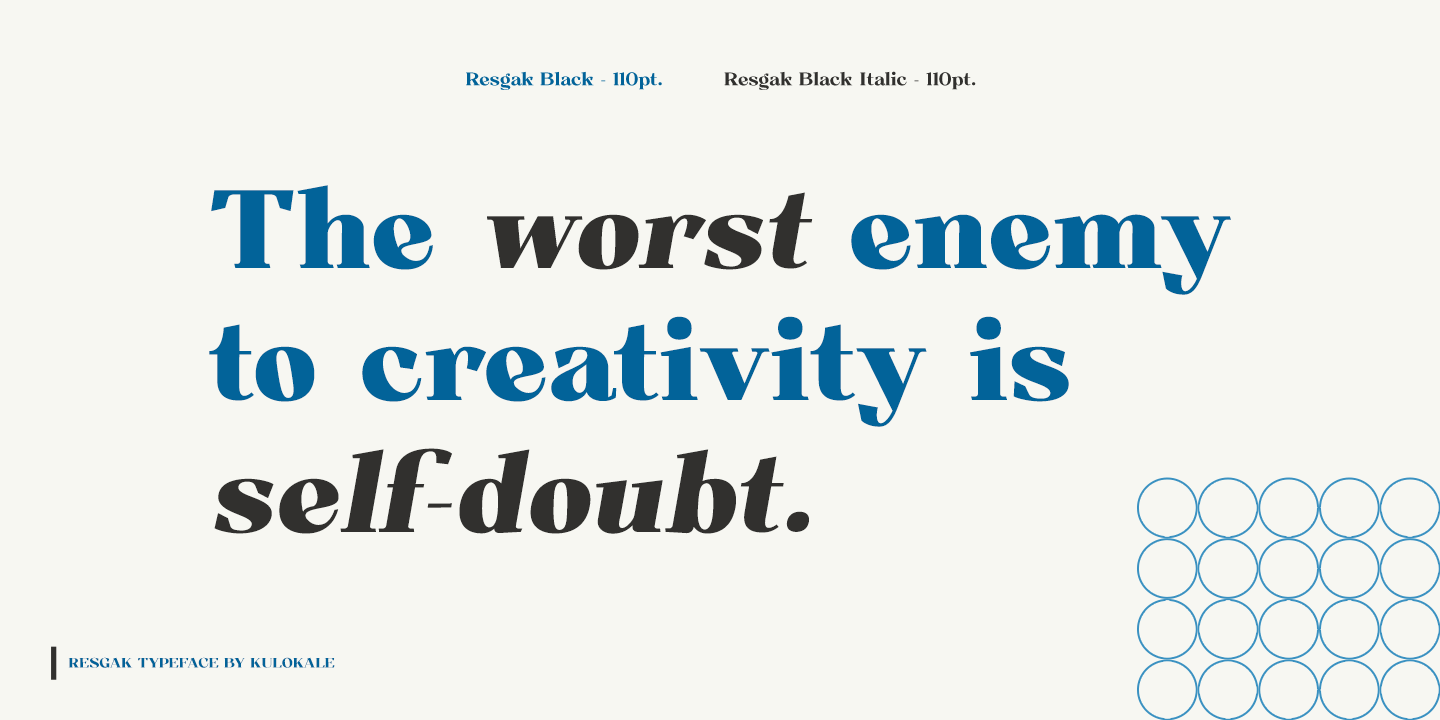
Resgak, designed by Eko Nur Cahyo at Kulokale foundry.
Modern serif fonts
Modern, or neoclassical serif fonts, were a new kind of typeface design that came about towards the end of the 18th century. They’re characterized by:
- Highly constructed letterforms
- Dramatic contrast between thin and thick strokes
- The vertical axis of curved strokes
- Common use of ball-shaped terminals at the end of strokes
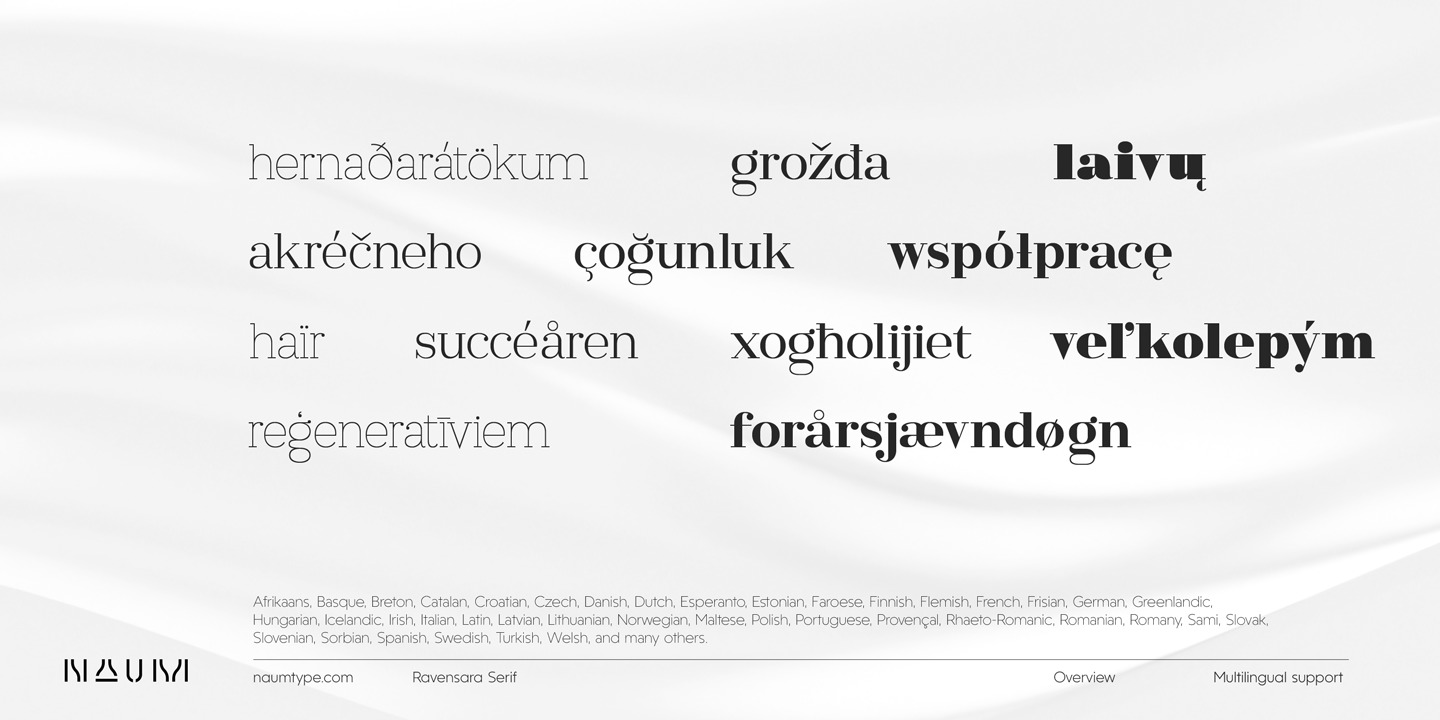
Ravensara Serif, designed by Peter Bushev for NaumType. This is a great example of a modern serif font that is both functional and full of personality.

Revans font family, designed by Ahmad Ramzi Fahruddin for Arterfak Project. A sleek ultra-modern serif font type example.

Merisca is a modern condensed serif font that was designed by Abul Almaududi and released by Pixesia Studio, in 2023.
Transitional serif fonts
Initially developed by English typographer John Baskerville in the late 1700s, transitional typefaces straddle the line between old-style serifs and modern (neoclassical) ones, combining elements of each. A transitional serif has much sharper serifs than humanist fonts.
You’ll notice these types of fonts have more contrast between the thick and the thin strokes in the letters.

Garcedo is a beautiful free transitional serif font.

LaFarge, released by Typetanic and designed by Gregory Shutters.
Slab serif fonts
Slab serifs grew to prominence in the 19th and 20th centuries for their use in advertising. They’re noticeable heavy serifs with consistent stroke weights, appearing almost like sans serifs with serif marks added on.
They’re sturdy and utilitarian fonts that are highly legible. A relic of the mass consumerism that they represent.

Clab is a slab font designed by Eko Bimantara. This font is bold yet casual and friendly.

Lagom is a new slab serif by Fenotype.
How to use serif fonts
Serif fonts bring a timeless elegance to a brand. If you’re going for a classic, sophisticated look, a serif font might be the right choice.
Serif fonts do well in printed materials, and some research suggests that serif fonts are actually easier to read. With that in mind, you should consider using this type of font in body text, or areas where legibility is important.
Brands that use serif fonts: Rolex, Tiffany & Co., and Mercedes-Benz are traditional and luxurious brands that use serif fonts in their logos.
2. Sans serif font types
Sans serif means ‘without’ serifs. Sans serif typefaces are typically favored by brands because they’re accessible and flexible in terms of what you can apply them to. Sans serif fonts are typically great choices for logo fonts and headlines but can be used in body text just as easily.
These types of fonts are known for their versatility and are well-suited to industries like tech, fashion, banking, retail, and more.
Let’s look at the main types of sans-serif fonts below.
- Grotesque sans serif fonts
- Geometric sans serif fonts
- Humanist sans serif fonts
Grotesque sans serif fonts
Grotesque sans serifs were some of the original sans serif fonts (judging by the name, I guess people didn’t like them at first.) Still, they were some of the most commercially available typefaces and have stood the test of time.
Most grotesques are of a geometric design, with simple lettering and more or less even stroke weights. They’re great for bold display fonts (we’ll get to those below) that need a bit of character. Grotesque sans serif fonts work perfectly in editorial design or ad headlines.

The legendary Latinotype foundry released Grotesco.

Santi Rey created the grotesque font, Alfreda.
Geometric sans serif fonts
These are arguably the most popular sans serifs fonts around and have been trending for years, with no sign of let up this year. They are highly structured, geometric-looking fonts with wide versatility. Stroke weight is usually pretty consistent all-round, and the form of each letter is built around a clear geometry.

Garute is a modern sans-serif typeface released in 2023 by MJType.
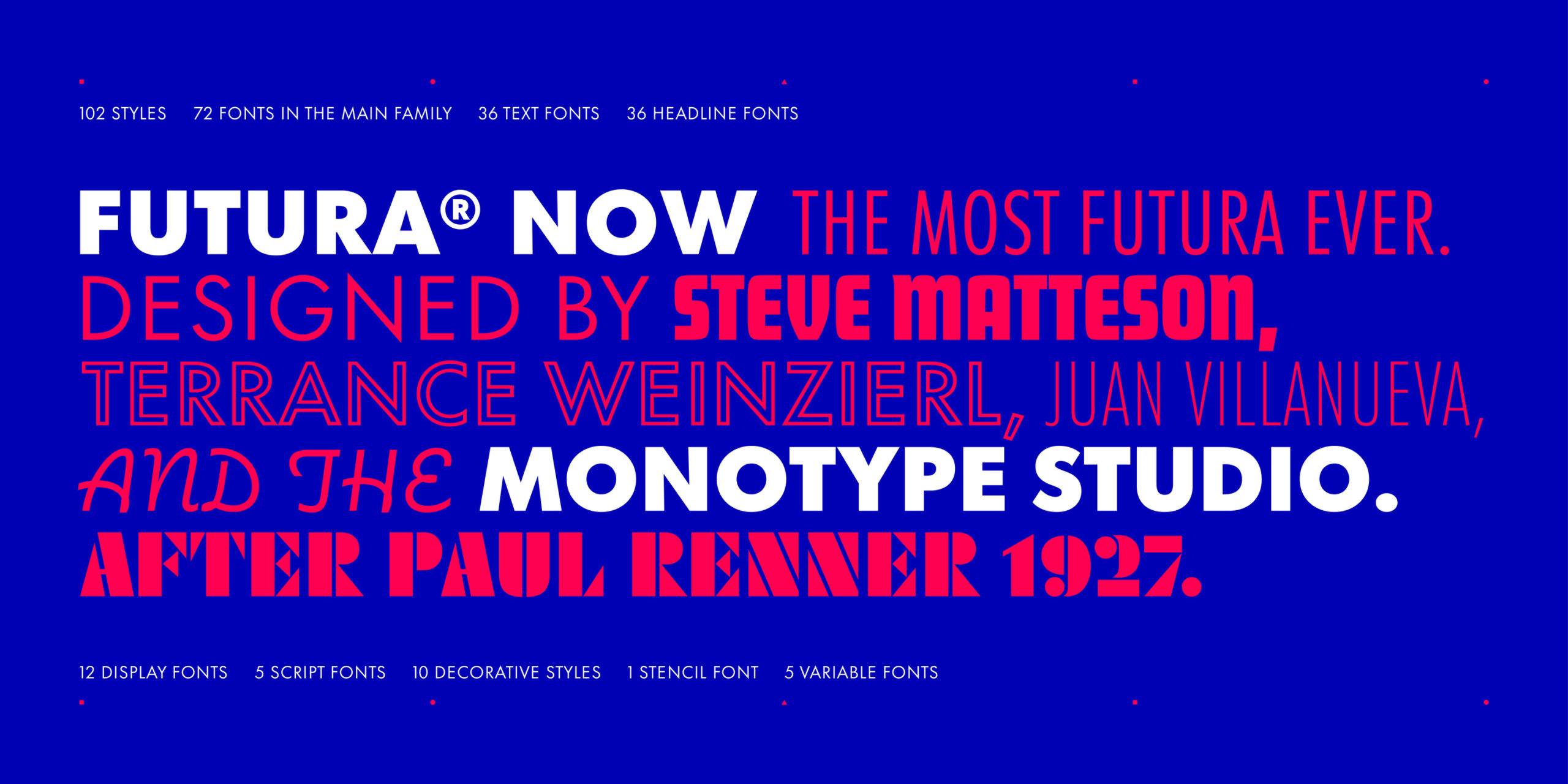
Futura Now, an update of the legendary geometric font Futura, was designed by Monotype
Humanist sans serif fonts
Humanist, or humanistic sans serifs, are defined by their organic feel and their relationship to roman inscription lettering. They are a close cousin of serif types in both look and proportions, and it has been claimed that they’re the most readable sans serif fonts as a result.

Created by Stawix Ruecha for Eastlane.

Monaco is a humanist typeface created by Salih Kizilkaya.
How to use sans serif fonts
Sans serif fonts are incredibly versatile. They can be bold and striking when set in a heavier weight, or minimal and airy when selected in lighter weights.
- Use bold, heavy sans serifs to call attention to something in a headline or announcement.
- Use lightweight sans serifs as accents, to create a serene and minimal feel.
Brands that use sans serif fonts: Tech giants like Google and Netflix use sans serif fonts in their branding. Some of the major designer fashion houses (like Burberry, or Yves Saint Laurent) have recently evolved their logos to leverage the fresh, and modern appeal of sans serif fonts.
3. Script font types
Script fonts or cursive fonts, call back to the times of calligraphy. These types of fonts are beautiful, artistic, and personal, as they are meant to mimic a person’s handwriting.
There are two kinds of script fonts:
- Formal script
- Informal or casual script
Formal script fonts
Formal script fonts are highly baroque and ornate in design. They’re typified by their big swirly bits and they look distinguished and official.
This type of font is best used for formal occasions like weddings and other events, and for businesses that deal in luxury items like jewelry or handcrafted items.

Tiffanka, a modern cursive script font created by Maulana Creative.
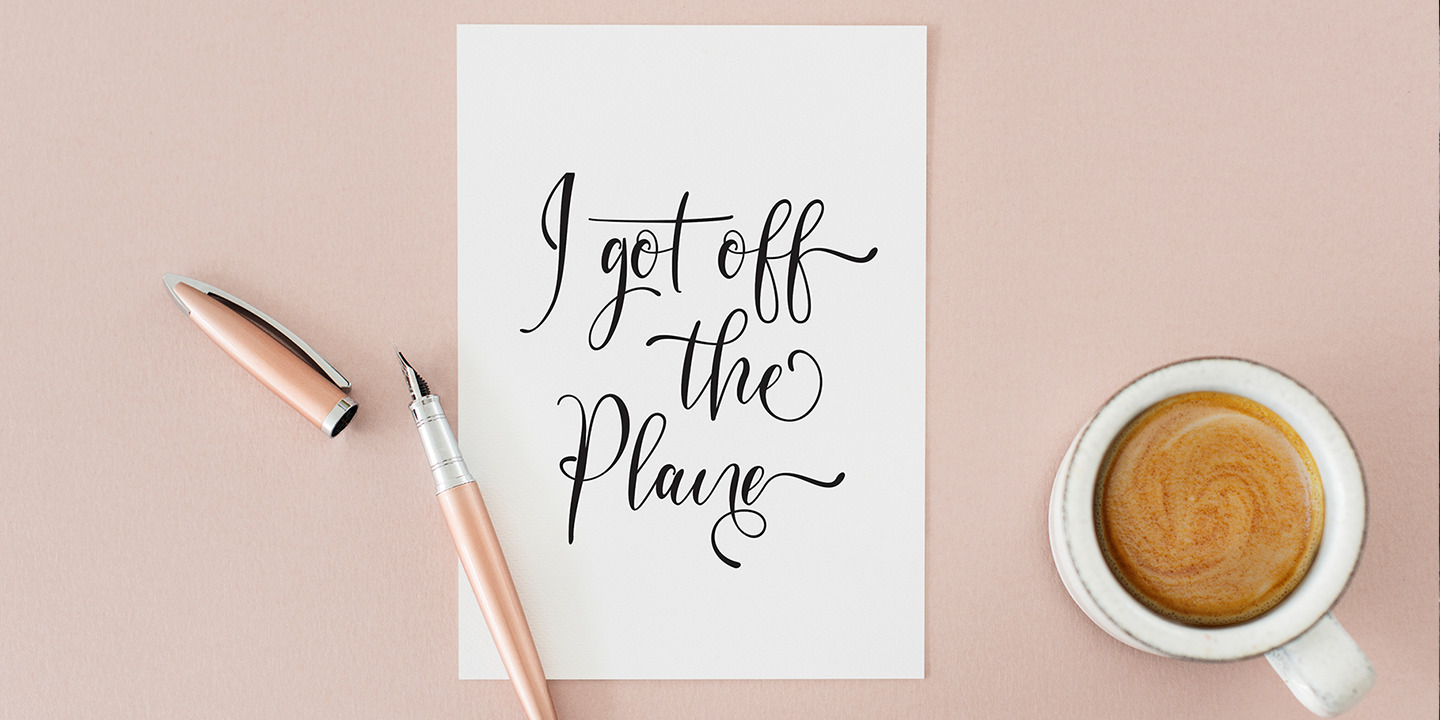
My Lova Olivia is a formal script font by Sulthan Studio.
Informal or casual script fonts
Informal script typefaces are designed to emulate casual, fast-paced handstyles, usually with a brush-script feel. They’re full of movement and energy and typically well-suited to clothing brands, hospitality, music festivals, and creative industries.

ED Caderette is a new casual script with a fun and original appeal. Designed by Emyself Design in 2023.

Brush Signature, a modern informal type of script font by Fikryal.
How to use script fonts
Script fonts have more use limitations than sans serif and serif fonts. For instance, scaling down a script font can decrease its legibility, so they are best used in spaces where they have room. Script fonts look great in wordmark logos, stickers, labels, and invitations.
Brands that use script fonts: Cadillac, Cartier, and Budweiser use formal script fonts while Sharpie, Barbie, and Ray-Ban use more informal script fonts in their brand identities.
4. Display font types
Display fonts, or decorative fonts, are called such because of their common use in larger applications or digital displays.
They’re rarely used for long bodies of text and are often highly striking and original in their design.
These types of fonts typically draw a lot of attention to themselves and are more about making a visual impact than true ease of reading.
Check out the display fonts below!

Bely Display, shown here in branding for Floh, a dried flowers brand.

Belotra is a semi-serif decorative display font that is full of character. It was released in March 2023 by Maulana Creative.
How to use display fonts
Use a display font to make a statement. Their ideal use for display fonts is ads, billboards, business cards, or anytime you need to capture attention.
Brands that use display fonts: Brands from the 70s were fond of using display fonts in their branding. Companies like Baskin Robbins, Lego, and Disney all use a display font as their logo to stand out and leave a lasting impression on their followers.
5. Handwritten fonts
Handwritten fonts, as the name suggests, mimic the appearance of handwritten text. They’re based on real hand lettering and have an organic, imperfect, and personal feel.
These fonts are often used to evoke a sense of creativity, personalization, and informality. They can bring a human touch to digital designs, making them ideal for conveying emotions and establishing a more personal connection with the audience.
Check out these handwritten fonts:

Des Montilles is a casual handwritten script font released in 2023.

Infamous is an unruly handwritten font style with a rugged and imperfect look.
How to use handwritten fonts
Handwritten fonts create a sense of personalization. They work well on invitations, greeting cards, personal branding, and social media graphics. Handwritten fonts are a great choice for businesses looking to convey a friendly and approachable image.
Brands that use handwritten fonts: Brands use handwritten fonts to convey authenticity and personal connection with their audience. Brands like Kellogg’s, Sharpie, and Stussy use handwritten fonts in their logos and marketing materials to convey a sense of charm and individuality.

Source: tenshi-streetwear.com
When using handwritten fonts, embrace their unique qualities and the imperfections that make them feel human. Experiment with different font styles to add a personal touch to your designs!
6. Monospaced fonts
Monospaced fonts, also known as typewriter fonts, are characterized by their consistent spacing between each character.
Unlike proportional fonts that have varying character widths, monospaced fonts have the same amount of horizontal space for each character. This gives them a uniform and structured appearance!
These fonts originated from typewriters and were designed to align neatly in columns, making them particularly useful for tasks that require precise alignments, such as coding, data tables, and text-based art.

Source: www.prepressure.com
Courier New, showcased here, is a popular monospaced font known for its legibility and clarity in programming environments.
How to use monospaced fonts
Monospaced fonts are perfect where clarity, precision, and uniformity are needed. They’re mostly used in programming and coding environments to enhance readability – a must when wading through 1000s of lines of code!
Brands that use monospaced fonts: Monospaced fonts are commonly seen in brands like GitHub, Microsoft, and IBM. These brands incorporate monospaced fonts in their logos, marketing materials, and user interfaces to convey a sense of efficiency and technical expertise.
 Incorporate monospaced fonts into your designs to evoke a sense of precision and order. Whether you’re coding or designing, monospaced fonts are reliable and visually appealing.
Incorporate monospaced fonts into your designs to evoke a sense of precision and order. Whether you’re coding or designing, monospaced fonts are reliable and visually appealing.
Part three: Popular font styles

Getting acquainted with the four main types of fonts is the first step to understanding which font is best for your project. The next step is selecting the right font style!
There are hundreds of different types of font styles out there! So here are some popular font styles and what they mean to help you choose ‘your beautiful’ type style.
Modern font styles
Modern fonts are clean and professional. Not too futuristic, but not too traditional either, modern fonts stand rooted in the here and now.
What we define as modern shifts with the times, but you can get a good sense of modern fonts by checking out the most recent font trends of the year!
Some examples of free modern fonts you can download on Google Fonts are:
Check out our guide to modern font styles here!
Vintage font styles
Vintage fonts are nostalgic and nod at an era gone by. These types of fonts are great for businesses steeped in tradition and history.
Here are some examples of vintage fonts that you can download for free on Google Fonts:
Check out our guide to vintage font styles here!
Romantic font styles
Romantic style fonts add a sweetness to everything they touch. From love notes to invitations, these fonts are soft and classic.
Here are some great examples of romantic fonts you can find for free on Google Fonts:
Get more romantic fonts in our guide here!
Minimalist font styles
Minimalist fonts are defined by their airy, sleek lettering and strong legibility. This style of font makes a big impact while often standing alone in a design.
You can find the following minimalist fonts for free on Google Fonts:
Learn more about minimalist fonts in our guide here!
Funky font styles
Funky font styles would fall under the display font category. These types of fonts have lots of character and add personality to anything they’re used in!
Check out these awesome free funky fonts on Google Fonts:
Where can I download free fonts?
You’ll find the most custom-looking fonts through designers and design studios. However, not everyone has the budget to purchase fonts. In this case, your best option is to download fonts for free online. But you’ll want to make sure you’re sourcing your fonts from trustworthy websites.
The best places to download free fonts online are:



















